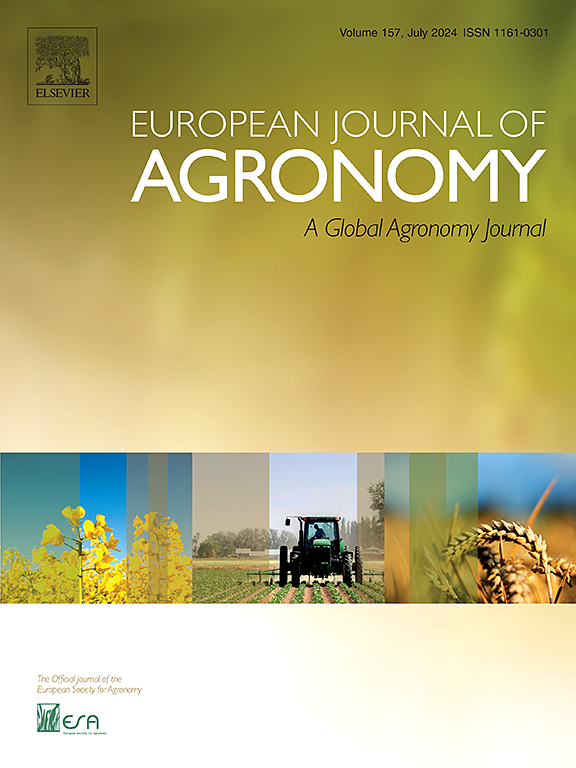外源赤霉素酸对茶树经济性状的影响
IF 5.5
1区 农林科学
Q1 AGRONOMY
引用次数: 0
摘要
茶树(Camellia sinensis)是重要的木本经济作物,茶苗的生长状况直接影响茶叶的经济价值。商品赤霉素(GA3)的施用可以调节茶树的生长,便于农民错开采收。然而,商用GA3对茶叶产量和品质的影响尚不清楚,其安全性有待进一步研究。在本研究中,我们在秋季和春季对茶园进行了GA3的商业应用。结果表明,施用商品GA3可提高茶树幼苗生长期的生长速度和出芽密度,从而通过提高出芽密度来提高茶叶产量。在秋季和春季施用商品赤霉素均未降低鲜叶和茶产品的质量。此外,急性口服毒性试验表明,小鼠食用经ga3处理的植物加工的茶的LD50大于10 g/kg。转录组分析表明,GA₃处理可能通过整合多种植物激素途径、增强光合作用、激素信号转导和细胞壁合成来促进发芽和生长。本研究对商品GA3在茶园中的应用进行了综合评价。本文章由计算机程序翻译,如有差异,请以英文原文为准。
The effects of exogenous gibberellic acid on the economic traits of tea plants
The tea plant (Camellia sinensis) is an important woody economic crop, and the growth of young tea shoots directly affects the economic value of tea. The application of commercial gibberellic acid (GA3) can regulate the growth of tea plants, facilitating staggered harvesting for farmers. However, the impact of commercial GA3 on tea yield and quality remains unknown, and its safety requires further investigation. In this study, we applied commercial GA3 to tea gardens in both autumn and spring. The results showed that the application of commercial GA3 increased the growth rate and sprouting density of tea shoots during their growth period, thereby enhancing tea yield by increasing sprouting density. The application of commercial gibberellic acid did not reduce the quality of fresh leaves or tea products in either autumn or spring. Additionally, acute oral toxicity tests indicated that the LD50 for mice consuming tea processed from GA3-treated plants was greater than 10 g/kg. Transcriptome analysis suggested that GA₃ treatment might promote sprouting and growth by integrating multiple plant hormone pathways, enhancing photosynthesis, hormone signal transduction, and cell wall synthesis. The study comprehensively evaluated the application of commercial GA3 in tea garden.
求助全文
通过发布文献求助,成功后即可免费获取论文全文。
去求助
来源期刊

European Journal of Agronomy
农林科学-农艺学
CiteScore
8.30
自引率
7.70%
发文量
187
审稿时长
4.5 months
期刊介绍:
The European Journal of Agronomy, the official journal of the European Society for Agronomy, publishes original research papers reporting experimental and theoretical contributions to field-based agronomy and crop science. The journal will consider research at the field level for agricultural, horticultural and tree crops, that uses comprehensive and explanatory approaches. The EJA covers the following topics:
crop physiology
crop production and management including irrigation, fertilization and soil management
agroclimatology and modelling
plant-soil relationships
crop quality and post-harvest physiology
farming and cropping systems
agroecosystems and the environment
crop-weed interactions and management
organic farming
horticultural crops
papers from the European Society for Agronomy bi-annual meetings
In determining the suitability of submitted articles for publication, particular scrutiny is placed on the degree of novelty and significance of the research and the extent to which it adds to existing knowledge in agronomy.
 求助内容:
求助内容: 应助结果提醒方式:
应助结果提醒方式:


